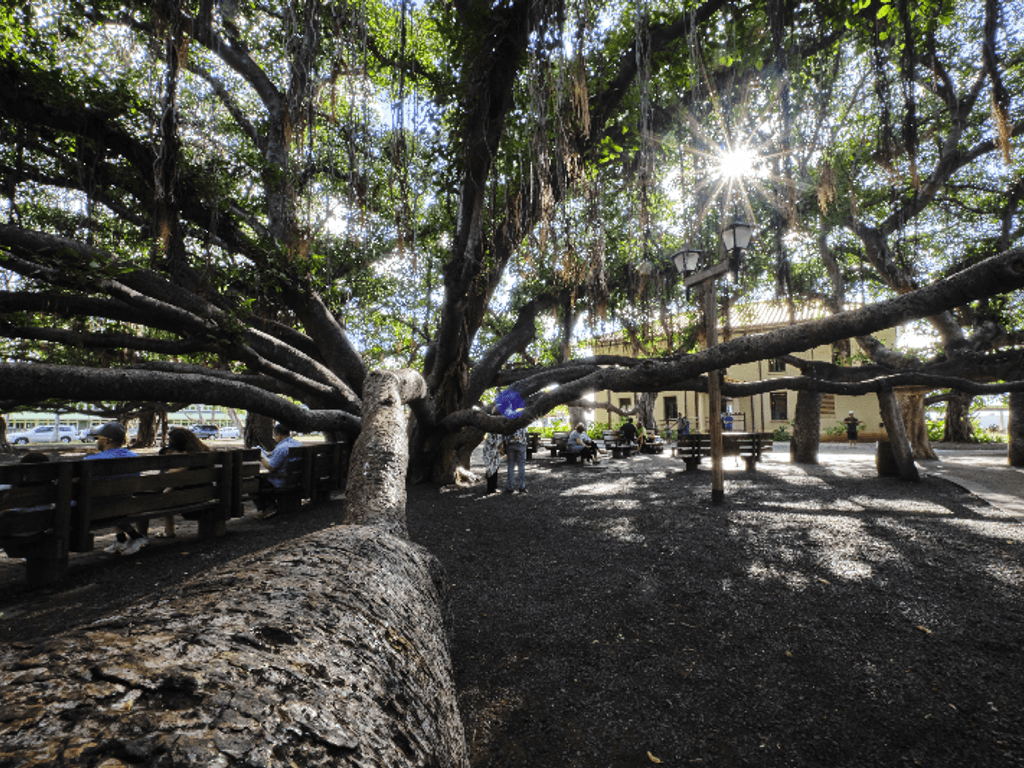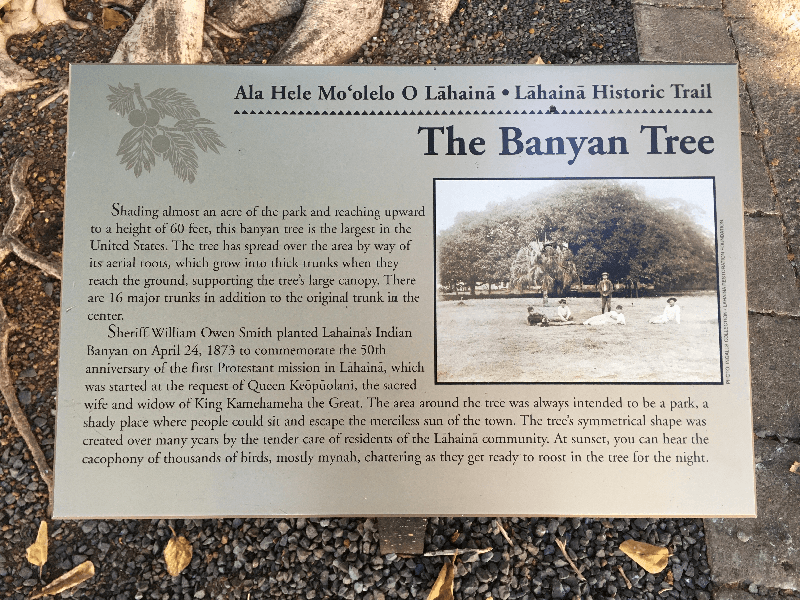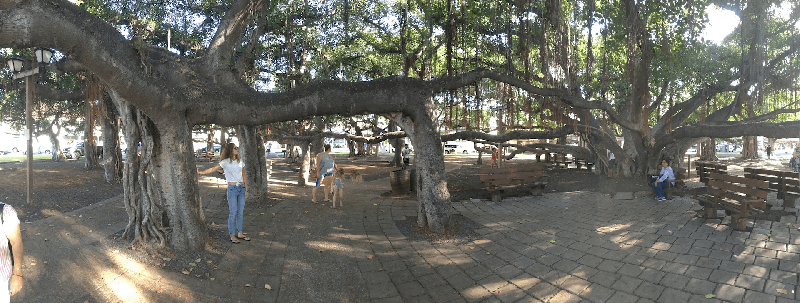
The Lahaina Banyan Tree
February 20, 2020
Taking up an entire city block, the Lahaina Banyan Tree is an iconic part of Maui's history. If you linger beneath its branches in Lahaina’s historic district, you’re bound to encounter people from around the world posing for photos. How did it come to be here, who planted it, and why? What is it about Banyan trees that makes them so special? How do they grow the way that they do? Read on to learn about the history of the Lahaina Banyan Tree and discover more fascinating facts about these incredible trees.
Planted in 1873
The Lahaina Banyan Tree is the oldest in the Hawaiian Islands. It was planted by William Owen Smith in Lahaina’s Courthouse Square. Smith was a descendant of American missionaries who was born and raised on the island of Kauai. While working at the courthouse (he was a lawyer and served as Sheriff in Lahaina from 1872-1874), he planted the tree in commemoration of the 50th anniversary of Christian missionaries arriving on Maui.
Smith was an extremely influential man who helped draft the 1887 Constitution of the Kingdom of Hawaii and was a member of the Committee of Safety, which organized the overthrow of the Kingdom of Hawaii in 1893. His two daughters went on to marry into the Baldwin Family of Maui’s Alexander and Baldwin Sugar Company. Smith would go on to open a law firm in Honolulu and serve as a Trustee for Kamehameha Schools and Queen Liliʻuokalani’s Estate, among others.

When to Visit
The best time to visit the Lahaina Banyan Tree is, well, anytime. In the early morning, it’s cooler and less crowded and you are more likely to find an open bench to sit beneath it. Early evening around sunset time is also nice if you are looking to capture a good photo of the tree with dramatic lighting. During Christmastime, the tree is decorated with thousands of Christmas lights - making for an incredible and festive sight. The tree sits next to the old courthouse, which is now home to the Maui Arts Society, featuring talented local artists. Gallery hours are 9am - 5pm.
About Banyan Trees
Banyan Trees, (Ficus benghalensis) are fig trees. Native to India, they thrive in Hawaii’s tropical climate. Banyans are nicknamed “strangler fig” due to their aggressive growing habits. When Banyan seeds fall on other nearby trees or human edifices, they promptly root and grow around it. There’s no stopping them and the other “host” plant will be slowly strangled to death. For such a large tree, their seeds are deceptively tiny allowing them to slip into the tiniest of spaces. Banyan trees also spread via their aerial prop roots that grow down to the ground and develop into thick trunk-like branches. Left untrimmed, Banyans can spread laterally and take over an entire area, creating a Banyan grove. Banyans can live to be hundreds of years old and cover acres of land.
The name “Banyan” originated in India, where the trees were prided for their shade by merchants who would sell their wares beneath them. In the Gujarati dialect, “vaniya” means grocer or merchant and over time the name came to be synonymous with the tree. The banyan’s Sanskrit names —nyagrodha, ‘the down-grower’ and bahupada, ‘the one with many feet” are more telling.
In India, the Banyan Tree is considered sacred, and can be found planted next to temples and holy sites across Southeast Asia. According to the Encyclopedia Britannica, one tree, Thimmamma Marrimanu, in Andhra Pradesh, India, is thought to have the broadest canopy of any tree in the world, stretching over five acres. There is superstition that this ancient tree has powers that include bestowing fertility upon couples who visit it. The Banyan is India’s national tree. The blog, Under the Banyan, written by author Mike Shanahan, is great resource for further reading on Banyan trees.

Banyan Trees in Hawaii
While the Lahaina Banyan is the oldest, the tree soon became popular, with tree enthusiasts planting Banyans on other islands. On the Big Island in Hilo, 50 Banyan trees were planted, including some by notable celebrities that were passing through like Franklin Roosevelt, Babe Ruth, and Amelia Earhart in the early 1900s. The area where the trees were planted along Hilo Bayfront would later be named Banyan Drive. The trees still stand today, some with plaques indicating who planted them. Another large Banyan grove can be found above Rainbow Falls, a major tourist attraction near Hilo’s historic district.
Two Banyan trees were planted at 'Iolani Palace in Honolulu in the 1880s after they were given as a gift to King Kalākaua. The trees still stand today next to the Palace, which is a National Historic Landmark and rumored to be haunted. It’s said that Queen Kapi‘olani was the one who planted the trees.